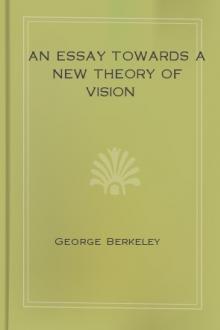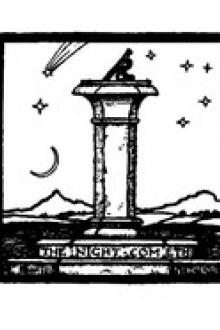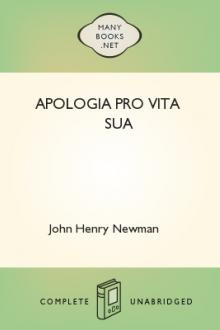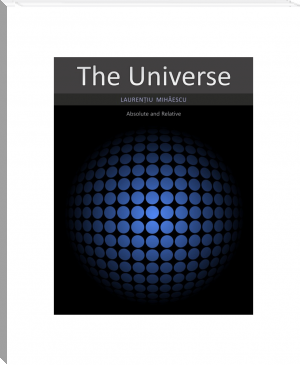An Essay Towards a New Theory of Vision, George Berkeley [best ebook reader for surface pro txt] 📗

- Author: George Berkeley
- Performer: -
Book online «An Essay Towards a New Theory of Vision, George Berkeley [best ebook reader for surface pro txt] 📗». Author George Berkeley
84. Corresponding to these two defects of sight, we may imagine as many perfections, to wit, 1ST, that of comprehending in one view a greater number of visible points. 2DLY, of being able to view them all equally and at once with the utmost clearness and distinction. That those perfections are not actually in some intelligences of a different order and capacity from ours it is impossible for us to know.
85. In neither of those two ways do microscopes contribute to the improvement of sight; for when we look through a microscope we neither see more visible points, nor are the collateral points more distinct than when we look with the naked eye at objects placed in a due distance. A microscope brings us, as it were, into a new world: it presents us with a new scene of visible objects quite different from what we behold with the naked eye. But herein consists the most remarkable difference, to wit, that whereas the objects perceived by the eye alone have a certain connexion with tangible objects, whereby we are taught to foresee what will ensue upon the approach or application of distant objects to the parts of our own body, which much conduceth to its preservation, there is not the like connexion between things tangible and those visible objects that are perceived by help of a fine microscope.
86. Hence it is evident that were our eyes turned into the nature of microscopes, we should not be much benefited by the change; we should be deprived of the forementioned advantage we at present receive by the visive faculty, and have left us only the empty amusement of seeing, without any other benefit arising from it. But in that case, it will perhaps be said, our sight would be endued with a far greater sharpness and penetration than it now hath. But it is certain from what we have already shown that the MINIMUM VISIBILE is never greater or lesser, but in all cases constantly the same: and in the case of microscopical eyes I see only this difference, to wit, that upon the ceasing of a certain observable connexion betwixt the divers perceptions of sight and touch, which before enabled us to regulate our actions by the eye, it would now be rendered utterly unserviceable to that purpose.
87. Upon the whole it seems that if we consider the use and end of sight, together with the present state and circumstances of our being, we shall not find any great cause to complain of any defect or imperfection in it, or easily conceive how it could be mended. With such admirable wisdom is that faculty contrived, both for the pleasure and convenience of life.
88. Having finished what I intended to say concerning the distance and magnitude of objects, I come now to treat of the manner wherein the mind perceives by sight their situation. Among the discoveries of the last age, it is reputed none of the least that the manner of vision hath been more clearly explained than ever it had been before. There is at this day no one ignorant that the pictures of external objects are painted on the RETINA, or fund of the eye: that we can see nothing which is not so painted: and that, according as the picture is more distinct or confused, so also is the perception we have of the object: but then in this explication of vision there occurs one mighty difficulty. The objects are painted in an inverted order on the bottom of the eye: the upper part of any object being painted on the lower part of the eye, and the lower part of the object on the upper part of the eye: and so also as to right and left. Since therefore the pictures are thus inverted, it is demanded how it comes to pass that we see the objects erect and in their natural posture?
89. In answer to this difficulty we are told that the mind, perceiving an impulse of a ray of light on the upper part of the eye, considers this ray as coming in a direct line from the lower part of the object; and in like manner tracing the ray that strikes on the lower part of the eye, it is directed to the upper part of the object. Thus in the adjacent figure, C, the lower point of the object ABC, is projected on C the upper part of the eye. So likewise the highest point A is projected on A the lowest part of the eye, which makes the representation CBA inverted: but the mind considering the stroke that is made on C as coming in the straight line CC from the lower end of the object; and the stroke or impulse on a as coming in the line AA from the upper end of the object, is directed to make a right judgment of the situation of the object ABC, notwithstanding the picture of it is inverted. This is illustrated by conceiving a blind man who, holding in his hands two sticks that cross each other, doth with them touch the extremities of an object, placed in a perpendicular situation. It is certain this man will judge that to be the upper part of the object which he touches with the stick held in the undermost hand, and that to be the lower part of the object which he touches with the stick in his uppermost hand. This is the common explication of the erect appearance of objects, which is generally received and acquiesced in, being (as Mr. Molyneux tells us [Diopt. par. 2. c. 7. P. 289.]) ‘allowed by all men as satisfactory’.
90. But this account to me does not seem in any degree true. Did I perceive those impulses, decussations, and directions of the rays of light in like manner as hath been set forth, then indeed it would not be altogether void of probability. And there might be some pretence for the comparison of the blind man and his cross sticks. But the case is far otherwise. I know very well that I perceive no such thing. And of consequence I cannot thereby make an estimate of the situation of objects. I appeal to anyone’s experience, whether he be conscious to himself that he thinks on the intersection made by the radious [SIC]
pencils, or pursues the impulses they give in right lines, whenever he perceives by sight the position of any object? To me it seems evident that crossing and tracing of the rays is never thought on by children, idiots, or in truth by any other, save only those who have applied themselves to the study of optics. And for the mind to judge of the situation of objects by those things without perceiving them, or to perceive them without knowing it, is equally beyond my comprehension. Add to this that the explaining the manner of vision by the example of cross sticks and hunting for the object along the axes of the radious pencils, doth suppose the proper objects of sight to be perceived at a distance from us, contrary to what hath been demonstrated.
91. It remains, therefore, that we look for some other explication of this difficulty: and I believe it not impossible to find one, provided we examine it to the bottom, and carefully distinguish between the ideas of sight and touch; which cannot be too oft inculcated in treating of vision: but more especially throughout the consideration of this affair we ought to carry that distinction in our thoughts: for that from want of a right understanding thereof the difficulty of explaining erect vision seems chiefly to arise.
92. In order to disentangle our minds from whatever prejudices we may entertain with relation to the subject in hand, nothing seems more apposite than the taking into our thoughts the case of one born blind, and afterwards, when grown up, made to see. And though, perhaps, it may not be an easy task to divest ourselves entirely of the experience received from sight, so as to be able to put our thoughts exactly in the posture of such a one’s, we must, nevertheless, as far as possible, endeavour to frame true conceptions of what might reasonably be supposed to pass in his mind.
93. It is certain that a man actually blind, and who had continued so from his birth, would by the sense of feeling attain to have ideas of upper and lower. By the motion of his hand he might discern the situation of any tangible object placed within his FI reach. That part on which he felt himself supported, or towards which he perceived his body to gravitate, he would term lower, and the contrary to this upper; and accordingly denominate whatsoever objects he touched.
94. But then, whatever judgments he makes concerning the situation of objects are confined to those only that are perceivable by touch. All those things that are intangible and of a spiritual nature, his thoughts and desires, his passions, and in general all the modifications of the soul, to these he would never apply the terms UPPER and LOWER, except only in a metaphorical sense. He may, perhaps, by way of allusion, speak of high or low thoughts: but those terms in their proper signification would never be applied to anything that was not conceived to exist without the mind. For a man born blind, and remaining in the same state, could mean nothing else by the words HIGHER and LOWER than a greater or lesser distance from the earth; which distance he would measure by the motion or application of his hand or some other part of his body. It is therefore evident that all those things which, in respect of each other, would by him be thought higher or lower, must be such as were conceived to exist without his mind, in the ambient space.
95. Whence it plainly follows that such a one, if we suppose him made to see, would not at first sight think anything he saw was high or low, erect or inverted; for it hath been already demonstrated in sect. 41 that he would not think the things he perceived by sight to be at any distance from him, or without his mind. The objects to which he had hitherto been used to apply the terms UP and DOWN, HIGH and LOW, were such only as affected or were some way perceived by his couch: but the proper objects of vision make a new set of ideas, perfectly distinct and different from the former, and which can in no sort make themselves perceived by touch.
There is, therefore, nothing at all that could induce him to think those terms applicable to them: nor would he ever think it till such time as he had observed their connexion with tangible objects, and the same prejudice began to insinuate itself into his understanding, which from their infancy had grown up in the understandings of other men.
96. To set this matter in a clearer light I shall make use of an example.
Suppose the above-mentioned blind person by his touch perceives a man to stand erect. Let us inquire into the manner of this. By the application of his hand to the several parts of a human body he had perceived different tangible ideas, which being collected into sundry complex ones, have distinct names annexed to them. Thus one combination of a certain tangible figure, bulk, and consistency of parts is called the head, another the





Comments (0)